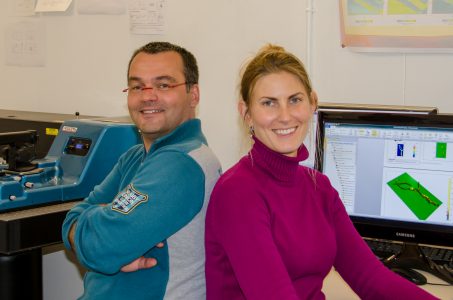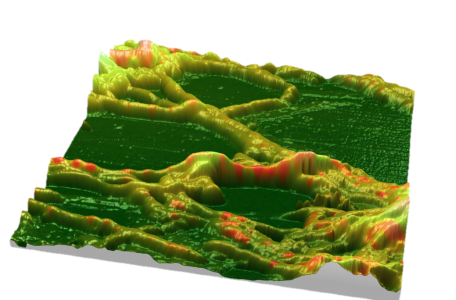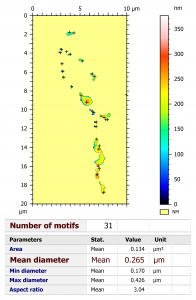During the last decade, research has shown that bio-oil fermentation by micro-organisms is a promising potential source of bio-fuel. Its renewability makes it a good alternative to bio-fuel production. Alexandre Dazzi and Ariane Deniset-Besseau, from the Université Paris-Sud, Orsay (France), studied the bacteria Streptomyces, a filamentous soil bacteria able to store excess carbon as triacylglycerol molecule (TAG), a kind of fat and potential source of biodiesel.
Mountains® software allowed them to perform an overlay of an IR absorption image onto AFM surface topography making it possible to observe fat pockets at different zoom levels and angles.
They were also able to achieve fat pocket count and calculation of morphological parameters in order to quantify pocket size.
Read more: pubs.acs.org/doi/abs/10.1021/jz402393a
Courtesy of Alexandre Dazzi and Ariane Deniset-Besseau, Laboratoire de Chimie Physique, Université Paris-Sud, Orsay, France.

Mountains® tools used
-
Image overlay on 3D topography

A nano-IR absorption image was overlaid on atomic force microscopy 3D topography allowing visual investigation of fat pockets in bacteria. This revealed size and location of small TAG vesicles (pockets of fat) – red zones on the image.
The 3D feature provides fast zooming, translation and rotation of all axes, making observation of vesicle distribution along the bacterium easy.
-
Motifs analysis

Instrument & software used
AFM-IR (atomic force microscope with tunable pulsed IR source) + MountainsLab® Premium software